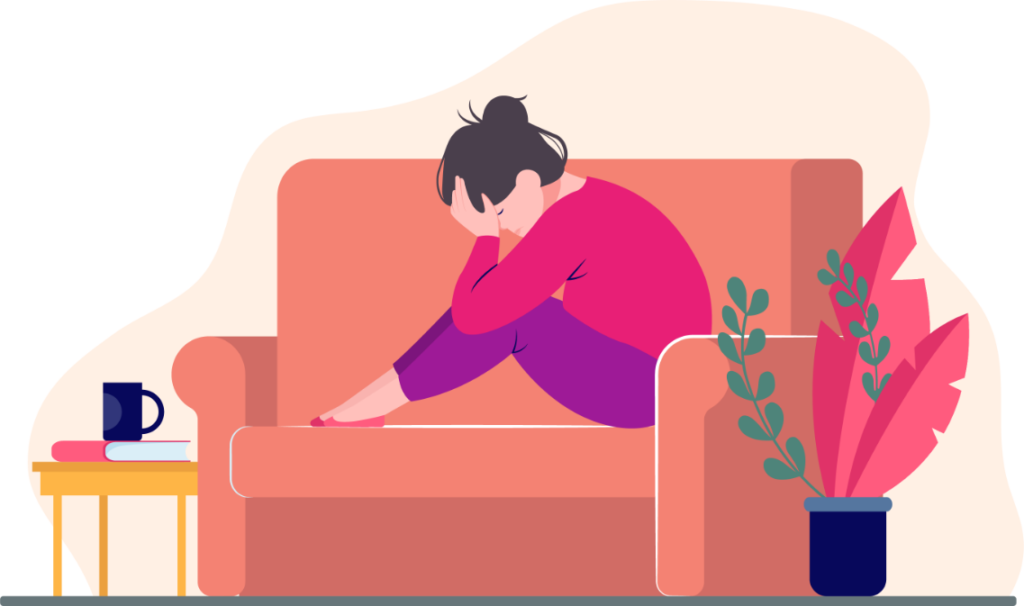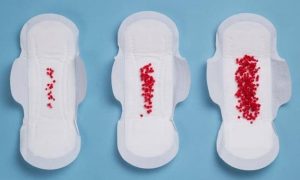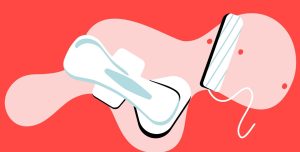Ever feel like your breasts have a mind of their own?
For many women, breasts change throughout the month along with your menstrual cycle. One week they fit perfectly in your favorite bra, the next they’re so sore you can barely stand to have anything touch them.
Don’t worry, you’re not alone and it’s normal. But that doesn’t mean you have to suffer through it. Here are top tips to help you cope with that cyclical breast tenderness and take back control.

Understanding Cyclical Breast Tenderness
Understanding cyclical breast tenderness is the first step to coping with it. For many women, breast soreness is linked to the menstrual cycle and caused by hormonal changes.
The Role of Hormones
Around your period, levels of estrogen and progesterone drop quickly. This hormonal shift can cause your breasts to become swollen and tender. The good news is, for most women breast tenderness is normal and not a cause for concern. Knowing that these hormonal ups and downs are temporary can help put your mind at ease.
Manage the Discomfort
While hormonal changes are unavoidable, you can take steps to relieve breast soreness. Wearing a supportive bra, applying a warm compress, limiting caffeine and salt intake, and using over-the-counter pain relievers can all help ease discomfort. Gentle breast massage with essential oils like lavender may also provide relief.
See Your Doctor If…
Breast tenderness that’s severe or lasts more than a week warrants a call to your doctor. Other signs that your breast soreness may not be normal include:
- Pain in only one breast
- A lump or thickening in the breast
- Nipple discharge
- Breast tenderness that starts after menopause
Most of the time, cyclical breast tenderness will resolve once your period starts and hormone levels stabilize. But don’t hesitate to consult your physician right away if you have any concerns about breast health.
Lifestyle Changes That Can Help
If your breasts become swollen and tender around your period, you’re not alone. Cyclical breast tenderness, also known as mastalgia, affects many women. The good news is there are some lifestyle changes you can make to find relief.
- Reduce caffeine and sodium
Caffeine and excess salt in your diet can trigger or worsen breast tenderness. Cut back on coffee, tea, and salty foods like chips and pretzels. Drink plenty of water to help your body flush out any built-up fluid.
- Wear a supportive bra
A well-fitting, supportive bra can help ease discomfort from breast tenderness. Look for a bra sized correctly for your current breast size and provides good support. Sports bras or bra camisoles are especially comfortable options during flare-ups.
- Apply a warm compress
A warm compress can help relax tense muscles and relieve pressure in your breasts. Soak a washcloth in warm water and apply it to your breasts for 10-15 minutes, a few times per day. The warmth will increase circulation, loosen any tightness, and reduce pain.
- Take an over-the-counter pain reliever
For severe breast pain, an OTC pain reliever like ibuprofen or naproxen can help. Follow the dosage instructions and talk to your doctor about using these medications regularly or in high doses.
By making a few simple lifestyle and diet changes, you can minimize monthly breast tenderness and make your period more comfortable. Be good to yourself – you deserve it! If your pain is frequent or intense, discuss other options with your doctor.
When to Seek Medical Care?
While cyclical breast tenderness is usually not a cause for concern, there are some instances where you should contact your doctor.
See your doctor right away if you notice:
- A lump or mass in your breast that does not go away after your period ends. While cysts and fibroadenomas are common and usually benign, any new lump should be evaluated.
- Bloody or clear nipple discharge. This can sometimes indicate a problem and needs to be checked out.
- Changes in the size, shape, or appearance of your breast. Sudden changes can be a sign of an underlying issue and warrant medical evaluation.
Severe breast pain that does not improve with self-care or over-the-counter medications. Pain so intense it disrupts your daily activities needs to be addressed by your physician. They may want to run some tests to determine the cause of your symptoms and make sure there are no other problems.
Breast tenderness or pain in only one breast. Bilateral tenderness is common with your menstrual cycle, but pain isolated to one side can indicate a cyst, infection, or other issue and should be evaluated.
While cyclical breast tenderness is normal for many women, don’t hesitate to contact your doctor right away if you notice these signs or symptoms or have severe, persistent pain that concerns you. It’s always better to be safe in matters of breast health. Your doctor can examine you, order any necessary tests, and determine if further treatment or follow-up is needed.
So, there you have it, three simple tips to help relieve your cyclical breast tenderness. Give these a try and stick with them – your body and mind will thank you. Remember, this too shall pass.
The discomfort is only temporary, even if it doesn’t feel that way at the moment. Be kind to yourself, and try to maintain a positive and nurturing mindset. Connecting with other women going through the same experience can help put your mind at ease.
You’ve got this, sister. Stay strong and keep your head high. Happier and more comfortable days are just around the corner!







